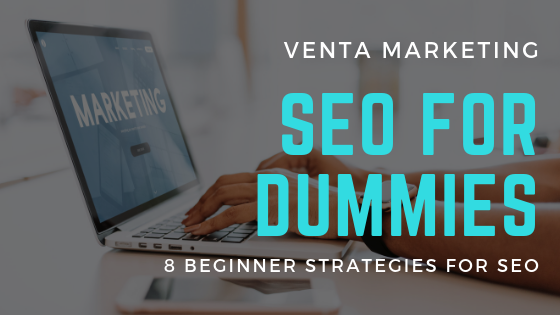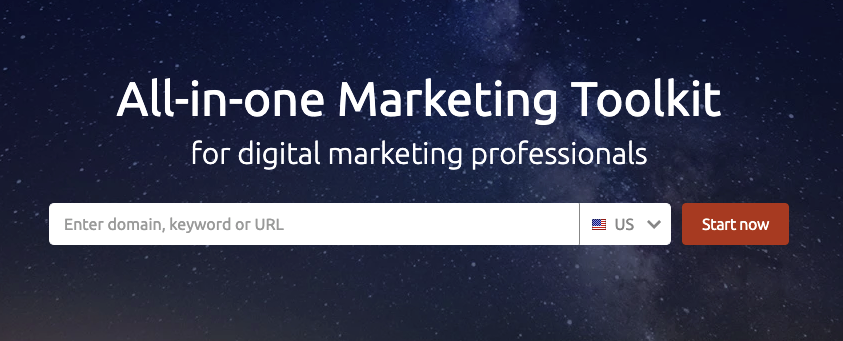
This guide was designed to help any SEO novice navigate through all major aspects of SEO, from researching keywords, to building links and developing a thorough SEO process. To get the most out of our guide, we recommend taking the time to explore our recommended tools and resource section. If your desire to learn more about SEO exceeds this article’s contents, then be sure to download our infographic so you can keep these tips handy or check out our 8 Pillars of SEO for a more in-depth analysis.
SEO is complex and ever-changing but with our help, anyone can easily understand the basics, and reading this article will make a big difference in your SEO process. Quality SEO education is hard to come by and free, quality SEO advice is even rarer, so sit down and dive into our guide so you can become a savvy SEO aficionado.

Step 1 – Find The Right Keywords
Keyword research is essential to understanding your website’s SEO and competitors. Simplifying your approach to keyword research will save you time and help you brainstorm new content strategies. We have boiled this process down to these three simple steps for your convenience.
1. Know The Customer
They say walking a mile in another man’s shoes will help you understand their experiences, challenges, and thought process – but what about typing in a search query from another man’s perspective?
The best way to understand your audience is to take a step back and think about what they are looking for online and consider the keywords they are typing into the Google search bar. Identifying the right keywords and knowing how they relate to the customer’s needs will help you write better content and develop better ads.
You may think you know everything about your customer but your research could make all the difference if there is an unknown keyword or phrase that prospective customers are searching without your knowledge.
2. Develop Your List
There are several keyword research tools that will help you identify the right and wrong keywords – our favorites are Google Keyword Planner and Moz’s Keyword Explorer.
Both of these tools will allow you to create endless lists of keywords and search queries that your customers may be using. Continue to qualify and rank your keywords of importance with a scoring matrix. Moz’s Keyword-Explorer will also allow you to score your keywords based on competitor rankings which will tell you how easy or difficult it will be to rank above them. Outranking your competitors is a constant game of cat and mouse so be diligent and refresh your keyword lists often.
3. Build Your Strategy Around The Keywords
Once you have your list of ranked keywords and phrases you can create your content strategy. You can develop a variety of valuable, content forward assets like blog articles, white papers, infographics, webinars, social media posts, or videos to increase online visibility.
Select one keyword to be featured in the title and throughout your piece of content so search engine crawlers know exactly what you’re writing about, improving your chances of ranking for that query.
See Our 26 SEO Terms That You Should Know Before You Start A Campaign
Step 2 – Take Empathy With The Customer
This task can be difficult when you are solely focused on one outcome with short term side effects but SEO is all about the long-game so we recommend a well-rounded approach to your marketing strategy.
As we mentioned before, it’s important to consider the thoughts, feelings, and assumptions of your audience before marketing to them. Taking empathy with your customers will allow you to see how your marketing registers on others and to see if they share the same feelings.
In the act of taking empathy with them, you will see their point of view and have an increased chance of interaction with a customer. An increase in interaction or understanding can make all the difference in an SEO campaign and convert a prospect into a paying customer.

Step 3 – Use The Free Tools
If you’re operating on a budget, don’t hesitate to lean on the free SEO tools at your disposal. Some of the most valuable tools for measuring your website’s health are totally free and easy to use on the internet.
Our favorite free tools include SEMRush and Google Search Console because you can gather tons of data on any website you search. With a free account, Google Search Console is ideal for uncovering and fixing technical, on‐page issues while SEMRush will allow you to perform 10 domain or keyword searches per day, manage one project, and create reports with ease. SEMRush also offers a monthly subscription version that allows you to manage more projects and pull more insightful data on competitors and your own SEO performance.

Step 4 – Leverage The Competition
Keeping up with the competitors online sounds a lot harder than it is because most SEO beginners don’t know where to look for competitor data. Many people think that monitoring competitor PPC ads, following them on social media, and reading their blogs is all they can do but there’s actually much more!
Investing in the right competitive analysis tools is the best first step you can take to improving your own SEO strategy. For example, if you’re using the paid version of SEMRush, their Gap Analysis and Domain Analytics features make it easy for you to compare your domain against others. Simply select the keyword type you want to research, like organic keywords, and you’ll see a side by side comparison of these sites by keyword, position on SERPs, and more.
By knowing how you stack up against the competition, you can steer your inbound marketing and content strategy to get ahead of other brands. Being in control will help you prioritize opportunities for certain keywords and help you make up ground in any areas where you are falling behind.
Step 5 – Develop Quality Content
Internet users are bombarded with content every single day and our brains only have time to process the wanted, meaningful content that sparks interest or answers our questions. Just like people, search engines prefer to process well-written, accurate information so it’s important to write well and fact check.
Slapping together incoherent thoughts is the true sign of sub-par content so it’s important to structure your content around specific moments. These moments will provide clarity to your readers, make your content readable for search engines, and improve your search rankings.
- Increasing Brand Awareness – Explain, in detail, who, what, where, when, and why concisely so people know all of the necessary information about your business. This will educate your audience on who you are, what your brand stands for, and help convince them why they should trust you.
- Create Calls To Action Through Curiosity – Instead of writing a one-dimensional piece of content, add specific calls to action that spark your reader’s curiosity to learn more about your company. Repetitive calls to action can be boring so spice things up with unqie value offers and language.
- Give Your Social Media A Spotlight – Give your audience the chance to connect with you and your business on different channels so you remain top of mind. Your loyal audience members want to follow you and keep up with any updates, news, or promotions related to your business.

Step 6 – Get Those Links!
Link building is an especially important strategy for those looking to increase their online visibility. Acquiring links from reliable or popular media outlets can be a huge boost to your website’s rankings.
A link building campaign is a process of actively trying to increase links to your website, usually accompanied by some kind of overarching objective. Your campaign will use website assets like infographics or blogs in order to acquire those links.
LINK TIP: You should always be looking for link opportunities from trustworthy websites that have a domain authority of 30 or higher. Anything less is fine, but the impact will be far less.
![]()
Step 7 – Set Up Tracking
Tracking your SEO campaign is the only way to know IF and HOW your efforts are working towards your goal. Without tracking, it will be impossible to know how your campaign is progressing and you won’t know what actions are hindering you from success.
Setting up Google Analytics on your website is a relatively simple task because you are essentially placing a small snippet of code on your site to track your audience’s onsite actions. With Google Analytics, you can implement new and improved SEO strategies for the better of your website.
Here are some of the most important metrics to track in your SEO campaigns:
- Website traffic
- Sessions
- Users
- New Users
- Pages/Session
- Average Session Duration
- Bounce Rate
- Goal Conversion Rates
- Goal Completions
- Traffic By Channel
- Organic
- Direct
- Referral
- Social
- Local Visibility
- Impressions
- Phone Call Tracking
- Website Visits
- Top Landing Pages
- Pageviews
- Users
- Pages/Sessions
- Bounce Rates
- Average Session Duration
Step 8 – Build A Process
SEO isn’t what it used to be but there’s no reason to dwell on the past because the best digital marketers are willing and able to adapt to changes in content, media, and search engine algorithms.
Prospective clients are looking for experts that can help their website improve its rankings and you must have the process to back it up. Business owners are far more aware of what success means in SEO and how search results work so it’s crucial to know how your process will find others success.
Your process should adapt to the changes and waves in digital marketing but solidify a monthly schedule of tasks so your strategy is organized. This organized effort is exactly what potential clients are looking for and although they may not understand the ins and outs of SEO, they will recognize strategy from chaos.
Now Try it for Yourself
Use our helpful SEO tips to create the best process possible and adjust it based on your flow or needs. When developing your process think about where your clients are now with SEO and where they’ll be in 3 months, 6 months, or even a year. It’s important to know how you can help them now and how you will be able to help them in the future. Maybe your clients aren’t ready for link building and that’s okay, but at least you can have that strategy in your back pocket for the day when they are ready.
Didn’t get enough SEO?
Check out our Top 3 SEO Auditing Tools of 2019>>
